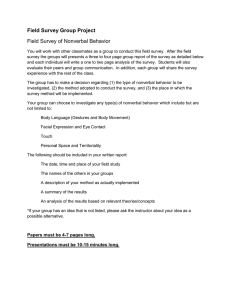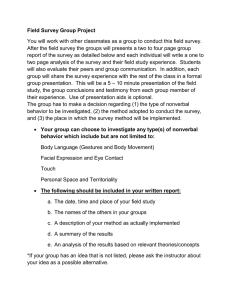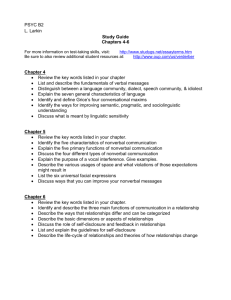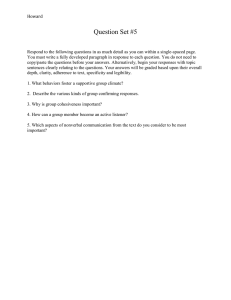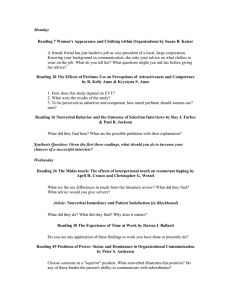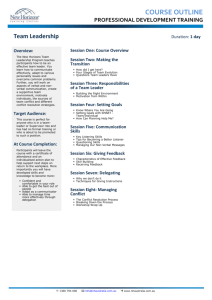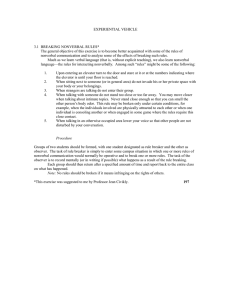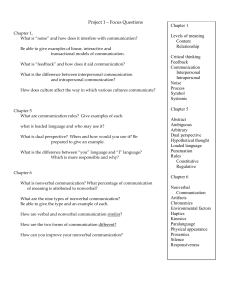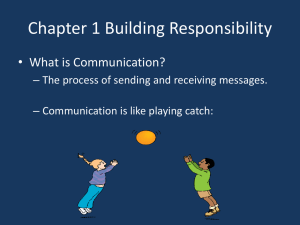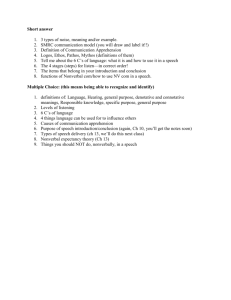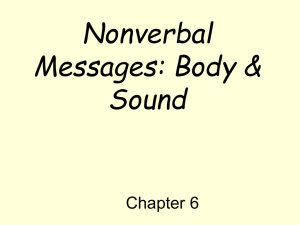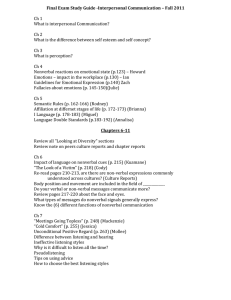Communicating Effectively Fact Sheet
advertisement
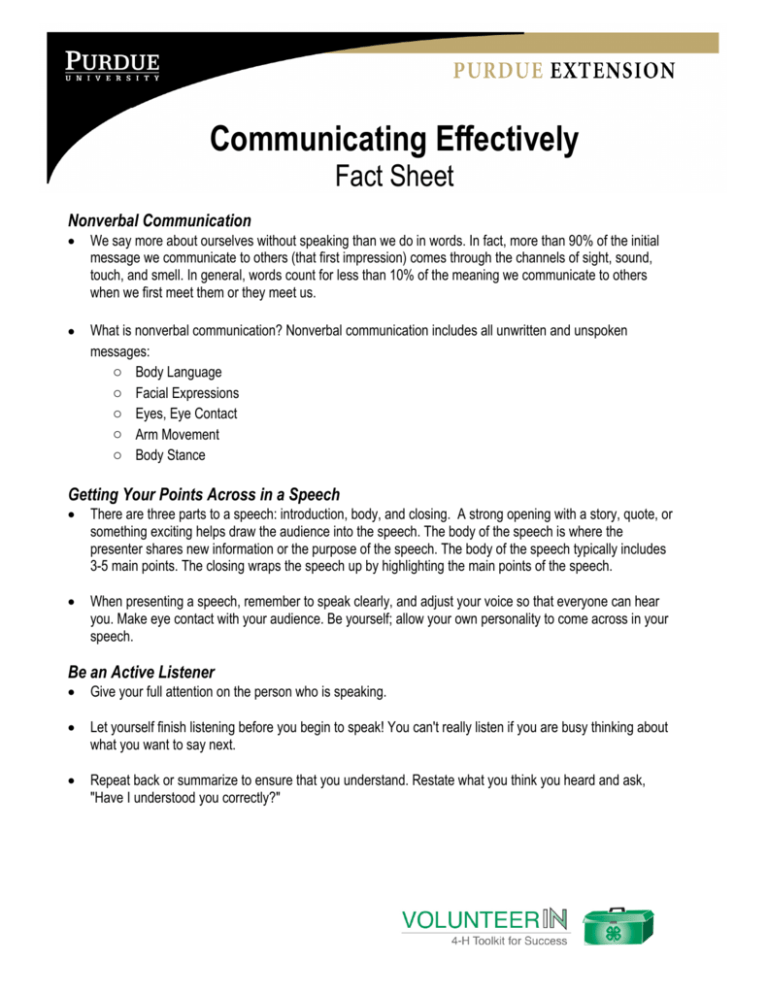
Communicating Effectively Fact Sheet Nonverbal Communication • We say more about ourselves without speaking than we do in words. In fact, more than 90% of the initial message we communicate to others (that first impression) comes through the channels of sight, sound, touch, and smell. In general, words count for less than 10% of the meaning we communicate to others when we first meet them or they meet us. • What is nonverbal communication? Nonverbal communication includes all unwritten and unspoken messages: o Body Language o Facial Expressions o Eyes, Eye Contact o Arm Movement o Body Stance Getting Your Points Across in a Speech • There are three parts to a speech: introduction, body, and closing. A strong opening with a story, quote, or something exciting helps draw the audience into the speech. The body of the speech is where the presenter shares new information or the purpose of the speech. The body of the speech typically includes 3-5 main points. The closing wraps the speech up by highlighting the main points of the speech. • When presenting a speech, remember to speak clearly, and adjust your voice so that everyone can hear you. Make eye contact with your audience. Be yourself; allow your own personality to come across in your speech. Be an Active Listener • Give your full attention on the person who is speaking. • Let yourself finish listening before you begin to speak! You can't really listen if you are busy thinking about what you want to say next. • Repeat back or summarize to ensure that you understand. Restate what you think you heard and ask, "Have I understood you correctly?"
